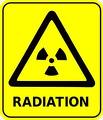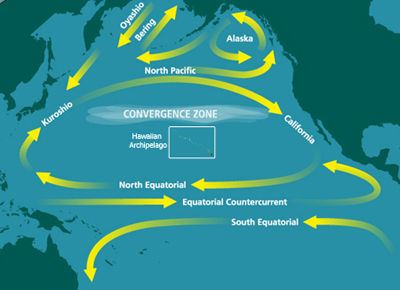The massive wave pulled the water out to sea before crashing back in and destroying the coast. Shocking
Taiwan nuclear accounts for 18.4% of electricity production, located close to the one at Shihmen - held up for years, and have been subject to mass protests on the streets of the Island. Scuffles broke out between legislators at a parliamentary debate on the plant this week.
Taiwan has three operational nuclear power plants n six reactors.
It have also had same problems over what to do with its nuclear waste for many years, which was dumped on a small island off its South-East coast, to the anger of its aboriginal inhabitants.
News of Taiwan nuclear leakage comes as 300 tonnes of highly radioactive water continues to pour out from Fukushima Daiichi crippled nuclear plant and into the Pacific Ocean.
Taiwan nuclear power plant may have been leaking radioactive water for 3 years, according to a report published by the govt's watchdog, adding to uncertainty over the fate of a new 4th nuclear power plant.
http://www.chinapost.com.tw/taiwan/national/national-news/2013/08/10/386043/Nuke-plant.htm
It 1st Nuclear Power Plant, located at Shihmen in a remote northern coastal location but not far from densely populated Taipei, has been leaking toxic water from storage pools of two reactors.
Official of Taiwan Power Co. (Taipower), which operates the island's nuclear power plants, said the water did not come from the storage pools, but may have come from condensation or water used for cleaning up the floor. ?We have explained to the Control Yuan. They asked us to look into if other causes were involved,? said the official. He declined to be identified as the matter is sensitive.
Radioactive water fuels fresh Fukushima fears 
http://www.straitstimes.com/the-big-story/asia-report/japan/story/radioactive-water-fuels-fresh-fukushima-fears-20130806Straits Times·3 hours ago
The Nuclear Regulation Authority (NRA), Japan's nuclear watchdog, has raised doubts about Tepco's plan to construct underground walls to prevent the contaminated water at the Fukushima No.1 plant from reaching the Pacific Ocean. The plant is located about 210km north of Tokyo.
The reason is that water in observation wells has already risen to a level higher than the top of the proposed underground walls.
According to the influential Asahi Shimbun daily, if water levels continue to rise at the present speed, the radioactive water could rise to the surface in about three weeks.
Fukushima prefecture official, who hosts plant, said consumers need not be worried by latest reports.
" Nothing has changed. All produce remains safe to eat as it must clear radiation tests mandated by the government," said Mr Isao Otomo, in response to a query from The Straits Times.
A no-go zones within 20km of the strickening plant, note - travel within the prefecture is unrestricted.
Still, The Japanese media and citizens' groups have also blasted the utility's secrecy, while foreign experts recently took it to task for its lack of transparency over radioactive leaks.
Last month, the former head of the US Nuclear Regulatory Commission, Mr Dale Klein, told a nuclear reform monitoring panel here. Tepco's chief executive that " you do not know what you are doing" .
Last week, Tepco also surprised the Japanese with the revelation that between 20 trillion and 40 trillion becquerels of tritium could have been washed out to sea from the crippled plant over a period of 26 months from June 2011 to July this year.
Tritium is a radioactive isotope of hydrogen and normally measured in becquerels. It is dissolved in water when released from a nuclear plant.
The 40 trillion figure cited by Tepco arises from calculations which assume that 400,000 litres of water are used every day to cool the reactors and that each litre of water contains 500,000 becquerels of tritium.
Tepco, however, pointed out that the maximum estimated outflow comes to about 20 trillion becquerels of tritium a year, which is close to the normally allowed level of 22 trillion becquerels for all six reactors at the plant before the March 2011 disaster.
The problem was not the amount of tritium leaked, but that it was leaked into the sea in an uncontrolled manner, a Tepco official was reported as saying.
teeth53 ( Date: 04-Aug-2013 22:19) Posted:
|
The quake took place in the Pacific off Miyagi prefecture. The area devastated by a 9.0 quake in March 2011.
Japan prepares for possible big earthquake- Channel NewsAsia - 31 Jul 16:41The Japanese government has warned that the country may be hit by an earthquake more damaging than the March 2011 earthquake and tsunami, which killed 19,000 people... full story
Japan Quake Map - March 11, 2011. Time-lapse visualisation of the earthquake off the coast of Sendai, Japan and its aftershocks.
http://www.channelnewsasia.com/news/asiapacific/cadmium-poisoning-from/761838.html
BEIJING: At least 26 villagers have died from cadmium poisoning and hundreds more fallen ill since 2009 near a disused factory in central China, local media said Wednesday, underscoring the country's mounting pollution challenge.
Soil samples from Shuangqiao in Hunan province contained 300 times authorised cadmium levels and excess amounts were found in 500 of 3,000 villagers tested by health authorities, the China Youth Daily said.
26 people had died as a result of cadmium exposure in the last four years, eight of them under 60 and 20 of them from cancer, while children in the village were born with deformities.
http://sg.images.search.yahoo.com/search/images?_adv_prop=image& fr=yfp-t-712-s& sz=all& va=cadmium (pic of cadmium)
http://globalresearch.ca/fukushima-pacific-ocean-will-not-dilute-dumped-radioactive-water/31200
 Operator of stricken Fukushima nuclear plant has been dumping thousand tons per day of radioactive water into Pacific ocean.
Operator of stricken Fukushima nuclear plant has been dumping thousand tons per day of radioactive water into Pacific ocean.
The reactors are “riddled with meltdown holes”, building 4 – with more radiation than all nuclear bombs ever dropped or tested – is missing entire walls, and building 3 is a pile of rubble.
Whole complex is leaking like a sieve, and the rivers of water pumped in, the reactors everyday just pouring into the ocean (Faithfully everyday).
Most people assume, ocean will dilute the radiation from Fukushima enough that any radiation reaching the West Coast of the U.S. will be low.
Just as we noted 2 days after the earthquake hit that the jet stream might carry radiation to the U.S. by wind – we are now warning that ocean currents might carry more radiation to the at least some portions of the West Coast of North America than is assumed.
Here is what the North Pacific Gyre looks like:
 West Coast of North America … and some of it is radioactive
West Coast of North America … and some of it is radioactive
Indeed, an island of Japanese debris the size of California is hitting the...In addition to radioactive debris, MIT says seawater which is itself radioactive may begin hitting Tepco Dumps 11,500 Tons of Radioactive Water Into the Pacific
the West Coast within 5 years. Given that the debris is hitting faster than predicted, it is possible that the radioactive seawater will as well...
Related content:
-
Fukushima dumping of radioactive water into Pacific Ocean violates international law
The mass dumping of highly radioactive water (measured at 7.5 million times the normal allowed levels) into the Pacific Ocean is not just an environmental disaster it’s also a violation of international law. The Convention on the Prevention of Marine… -
Fukushima: Towards the Formation of a Radioactive Graveyard in the Pacific Ocean?
Floating Radioactive Debris Reaching Hawaii Sooner Than Expected -
Radioactive Fish in the USA?
The FDA says it won’t monitor radiation in fish on the West Coast of the U.S. As the Anchorage Daily News notes:
North Pacific fish are so unlikely to be contaminated by radioactive material from the crippled nuclear plant.
http://www.ens-newswire.com/ens/mar2011/2011-03-24-01.html
Radioactivity Contaminates Tokyo Vegetable, Water in Six Prefectures
TOKYO - March 24, 2011 Radiation above the legal limit has been detected in a vegetable grown in Tokyo, Japan's health ministry said. This is the first time that elevated levels of radioactive cesium have been found in a Tokyo vegetable since the damaged Fukushima Daiichi nuclear power plant began spewing radioactivity into Japan's air, water and soil.
The nuclear plant operated by Tokyo Electric Power was damaged during the 9.0 magnitude earthquake and tsunami on March 11. Loss of power to the plant and failure of emergency backup generators caused loss of cooling water to the nuclear fuel in four of the plant's six reactors. Several explosions of radioactive hydrogen gas and two fires in spent fuel pools released radiation over a wide area.
 |
Komatsuna, or mustard spinach, is the type of vegetable found to be contaminated. (Photo by Takeshi Iwamoto) |
The health ministry says radioactive cesium was detected in a leafy vegetable called komatsuna, or mustard spinach, sampled from a research field in Edogawa ward on Wednesday. The contaminated vegetable is not for sale in markets.
The health ministry says that level of radioactivity would not have an adverse effect on health, even if the vegetable was eaten.
Tokyo Metropolitan Got has lifted its advice against giving tap water to infants in Tokyo's 23 wards and 5 adjacent cities.
Governments of Fukushima, Ibaraki, Chiba, Saitama and Tochigi prefectures have detected more than 100 becquerels of iodine per liter of water, above the safety level for infants under 12 months.
The water is considered to be safe for adults to drink.
TEPCO, which has faced frequent criticism for downplaying dangers and not being forthcoming about problems at the site, revised its method of estimating the level of radiation exposure among workers earlier this month.
TEPCO reported to World Health Organization in December that only 178 workers...at the plant were believed to have received radiation doses to their thyroid glands above 100 millisieverts.
teeth53 ( Date: 25-May-2013 18:24) Posted:
|
http://sg.news.yahoo.com/thyroid-cancer-risk-2-000-fukushima-workers-tepco-105806695.html
Thyroid cancer risk for 2,000 Fukushima workers: TEPCO
Around 2,000 people who have worked at Japan's wrecked Fukushima nuclear plant face a heightened risk of thyroid cancer.
Tokyo Electric Power (TEPCO) said 1,973 people, around 10% of those employed in emergency involved in the clean-up since the meltdowns -- were believed been exposed to radiation to cause potential problems.
Figure is a 10-fold increase on TEPCO's previous estimate of the number of possible thyroid cancer victims, after the utility was told its figures were too conservative.
http://abcnews.go.com/blogs/headlines/2013/07/deformed-vegetables-fruit-reportedly-pop-up-around-japan-nuclear-plant/
2 years after nuclear disaster, Japan spawns freaky veggies.
It might be wise to steer clear of vegetables from Japan's Fukushima area for, oh, say a few hundred years.
A Korean website assembled this image collection of produce from towns and villages surrounding the Fukushima Daiichi nuclear power plant. And they are NOT pretty pictures.
From Siamese-twinned corn cobs to what can only be called peaches with elephantiasis, the region's agriculture appears to have taken a heavy radiation hit from the nuclear disaster in 2011.
It's not clear yet what effect eating the produce might have on the population, but you never know. It could be pretty dangerous, but you never know — in an ideal world, maybe it could give you superpowers. [Source] [Source]
Last year, Japanese scientists said that “abnormalities” detected in the country’s butterflies may be a result of radioactive fallout from the Fukushima disaster. Researchers said that “artificial radionuclides” from the stricken power plant caused “physiological and genetic damage” to pale grass blue butterflies.
Five months after the disaster, cesium 137 and 134 were detected in more than a dozen bluefin tuna caught near San Diego. The levels were 10 times higher than tuna found in previous years.
teeth53 ( Date: 07-Apr-2013 12:44) Posted:
|
http://sg.news.yahoo.com/photos/japan-s-mutated-vegetables-a-fukushima-fallout-slideshow/#spotlight=%252Fphotos%252Fjapan-s-mutated-vegetables-a-fukushima-fallout-slideshow%252Fjapan-s-mutated-vegetables-a-fukushima-fallout-photo-1374203356376.html
Fukushima nuclear reactor meltdown have been devastating.
The mortality rate of elderly people who were in retirement facilities near the nuclear plant has reportedly tripled.
There has also been reported increases in the number of children with flat feet, thought to be the result of kids playing on radiated soil.
Devastation from the traveling radiation has even sickened infants born in other countries.
Radiation has apparently found its way into devastating the food chain, as a series of photographs showing Japanese 'mutant vegetables'
Mutated veggies due to Fukushima fallout?
Images of deformed vegetables from Japan with tumour-like growths emerge online. Fukushima fallout?
Japan's Nuclear Options

Several companies applied to Japan's Nuclear Regulation Authority on July 8 for permission to restart a total of 10 nuclear reactors in the country. Despite widespread apprehension in Japan about nuclear power following the Fukushima disaster in 2011 that led to the shutdown of all of the country's 54 nuclear reactors, the plan to restart the reactors may succeed for a few reasons.
The reactors are located in four different prefectures and are all on the less densely populated west coast, which is also less vulnerable to tsunamis than the east coast. Additionally, their type and age will likely make it easier for the reactors to pass newly established safety standards. Finally, unlike much of the rest of the country, the local governments in the prefectures housing the plants that applied for restart are either neutral or pro-nuclear power.
Nuclear power remains the most immediate solution to reduce Japan's expensive energy imports, and these reactors could offer the country a chance to slowly bring nuclear power back online.
However, even these plants will have to deal with new, lengthy safety inspections, and they will likely not restart until 2014 at the earliest -- and then only if they do not face major opposition at the local level.
Masao Yoshida, the former chief of the Fukushima No. 1 nuclear plant who stayed at his post to try to tame the three runaway reactors after the 2011 quake and tsunami, died Tuesday of esophagus cancer. He was 58.
On March 11, 2011, when the towering waves swamped the cooling systems and sparked the meltdowns that released plumes of radiation.
Yoshida led the subsequent effort to get the crippled complex under control as workers battled frequent aftershocks.
Govt contingency plans revealed after the event showed how scientists feared a chain reaction if Fukushima spiralled out of control, a scenario that could have seen other nuclear plants engulfed and would have meant evacuating Tokyo.
His selfless work is contrasted in the public mind with the attitude of his employers at Tokyo Electric Power Co., who seemed willing to abandon the complex and are popularly believed to have shirked their responsibility.
“He died of esophagus cancer at 11:32 a.m. today at a Tokyo hospital,” Yoshida left the plant soon after hospitalized in late November 2011.
Tepco has said his cancer was unlikely related to radiation exposure.
http://en-maktoob.news.yahoo.com/japan-may-restart-reactors-fukushima-situation-worsens-110830490.html
Japan may restart several reactors shut down by the Fukushima nuclear crisis in about a year, a senior regulator said in an interview on Tuesday, a day after new safety rules went into effect designed to avoid a repeat of the disaster.
At the Fukushima Daiichi nuclear plant north of Tokyo, the site of the world's worst atomic disaster since Chernobyl in 1986, the situation took a turn for the worse as radiation levels in groundwater soared, suggesting highly toxic materials from the plant are now close to the Pacific Ocean.
Japan is forging ahead with attempts to restart idled reactors in the face of a sceptical public.
Friday - hits 400? - critical
Singapore's smog hit on the 400 level, making it potentially life-threatening to the ill and elderly people, according to a govt monitoring site. It was reached at 11 am after a rapid rise in the Pollutant Standards Index, which measures the haze crisis caused by Indonesian forest fires.
Feeling giddy.......do drink more water n hav enuff sleep.
UPDATED 20 June, 6pm: 3-hour PSI reading reached 310, within the " hazardous" range, at 6pm Thursday, after hitting a new all-time high of 371 at 1pm]
The Pollutant Standards Index (PSI) hit a new record high of 371 at 1pm on Thursday, again climbing into the " hazardous" range of above 300, according to data from the National Environment Agency (NEA).
 NewsOnJapan.com /
It is the first time Japan.
NewsOnJapan.com /
It is the first time Japan. 